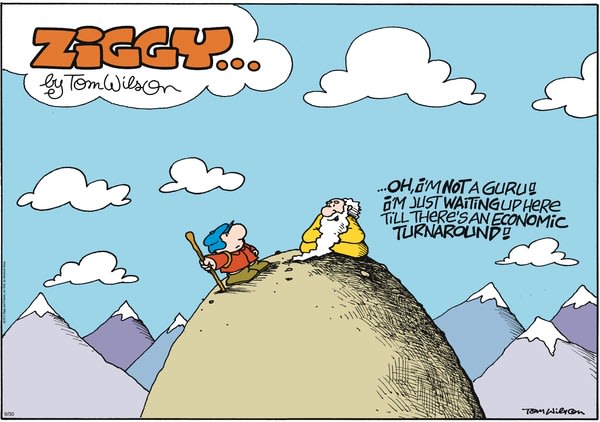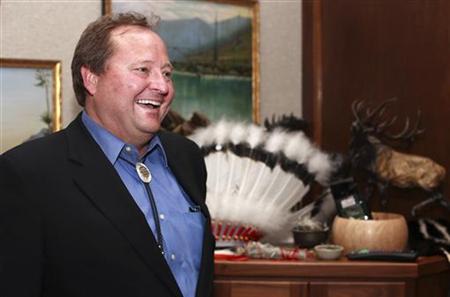Montana, looking to cut down on state healthcare costs, has opened the nation's first government-run clinic for state employees in a program the Rocky Mountain state's governor says could ultimately cover a much broader range of people.
Democratic Governor Brian Schweitzer says the primary care clinic
in the state capital Helena will keep the area's 11,000 state workers
and their dependents healthier while saving the state $20 million over
five years.
The move coincides with a national debate over the role of government in healthcare
and over President Barack Obama's Affordable Care Act,
under which more than 30 million people would become eligible to buy
subsidized private insurance or get coverage through Medicaid, the
government program for the poor, in 2014.
The repugican
opponents of that law better known to the public as "Obamacare," which
also requires most Americans to have some form of health insurance, say
it amounts to government intrusion in the private lives of individuals.
Under Montana's
separate program, state employees were quickly booking slots for the
privately operated clinic, which the state expects to generate savings
by reducing duplicate testing for patients and by paying doctors by the
hour rather than by the procedure.
"We're completely full," Schweitzer said on a recent
tour of the facility ahead of its opening, the first of three scheduled
to open this year.
Since starting up
late last month, the clinic has seen more than 1,000 patients and was
operating at 98-percent capacity, his office said.
Employees who use its services will see no change in
coverage for visiting doctors outside of the clinic, although it is only
at the new health clinic where they will be charged neither a co-pay
nor a deductible.
"I can afford this," patient Sarah Yancy said with a laugh.
"There are a lot of times I didn't go to the doctor
when I wanted to go to the doctor because I knew I'd have to pay for
it," said Yancy, who works in administrative support with the Montana
Department of Natural Resources and Conservation.
Schweitzer has been
critical of Obama's healthcare overhaul, saying it did not do enough to
control costs, while stopping short of outright opposition. He unveiled
his own plan for opening state health clinics in February and then set
an aggressive schedule to have the first one open by late summer.
The state hopes to start two other clinics in cities such as Billings, Missoula or Bozeman later this year.
The program is not
designed to serve the state population as a whole. But if successful,
the clinics could be opened to recipients of Medicare, the government
health program for the elderly, as well as Medicaid, Schweitzer said.
"This is a game
changer," said healthcare consultant Mike La Penna, who has been
studying the on-site clinic industry for the last decade and recently
published a book on the subject. "Other states will be watching this
closely."
Counties and cities in other parts of the country have
opened similar clinics serving municipal or county workers, but never
before on the state level, La Penna said.
PRIVATE CONTRACTOR
The state is contracting with the private
Tennessee-based Care Here to operate the clinic. Physician assistant
Cassie Springer says she wanted to work at the center because she liked
the preventive care model.
"We're looking at bringing in patients regularly,
staying on top of their healthcare," she said about the clinic, which
focuses on primary care services and nutrition counseling.
The state, which already pays workers' healthcare costs
directly to providers through state coffers, saves money if this
prevents more expensive treatments or emergency room visits down the
line. Staff are also paid salaries or by the hour, not by the procedure,
which officials say should cut down on redundant or unnecessary
procedures.
An analysis of the
health clinic plan shows Montana saving $100 million over the next five
years "based on full implementation for all clinics across the state,"
according to state Health Care and Benefits Division Administrator Russ
Hill.
The funds for the
clinic come from the same pot that Montana already uses to cover
healthcare costs, and Schweitzer's administration says the Helena clinic
should pay for itself in the first year.
Schweitzer has
asked U.S. Health and Human Services Secretary Kathleen Sebelius for
permission to import lower-cost prescription drugs from Canada for the
clinic. Similar requests he has made on a statewide basis have not been
approved.
Schweitzer, who
will be leaving office at the end of this year due to term limits, has
been getting criticism from opponents of Obama's Affordable Care Act,
the president's signature healthcare reform that has been assailed
during the campaign by repugican presidential candidate Mitt Romney.
"The only thing this has to do with the Affordable Care Act
is we are challenging expenses here in Montana because they didn't
challenge expenses in Washington, D.C.," Schweitzer said of his program,
which is patterned after on-site clinics used by some private sector
companies for their employees.
State repugican
leaders, however, have expressed mixed feelings about the effort. The repugican gubernatorial candidate Rick Hill said he does not believe it
will save the state money, and he is opposed to asking state employees
to leave their doctor for a government-run clinic.
The repugican state senator Dave Lewis said his problem was not with the clinic itself.
"The issue is
whether or not a governor unilaterally has the authority to make that
kind of policy change," Lewis said.
He is working on a
bill for the next legislative session that would prevent the governor's
office from having that ability in the future.































